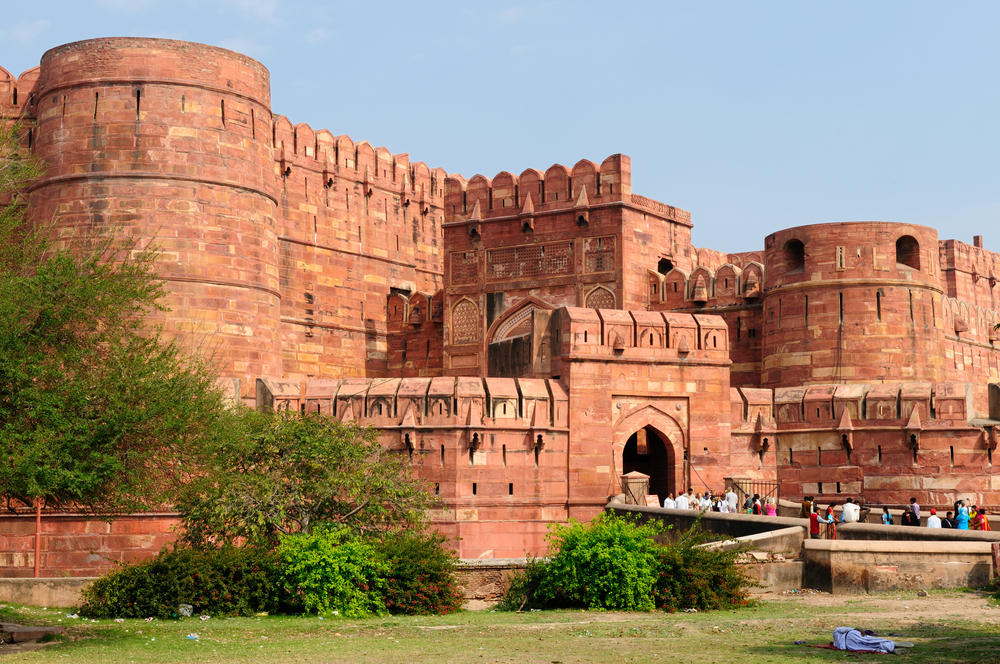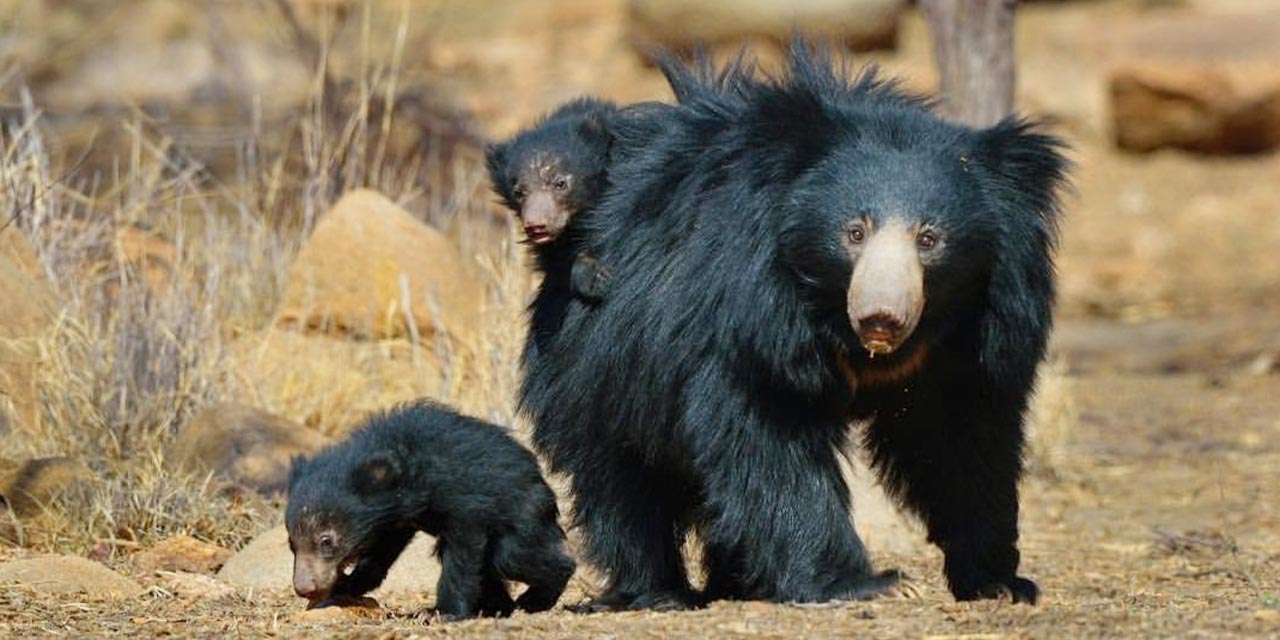
Tigers Of Central India And The Golden Triangle
The Tigers of Central India and the Golden Triangle is a carefully-crafted itinerary that covers the best of India. Along with the historical and cultural trail of the Golden Triangle take the elusive opportunity to come face to face with the mighty Tigers in the lush jungles of Central India. The 13-day tour perfect balances the charms of Delhi, Jaipur and Agra along with thrill of wildlife adventure at the best national parks of India- Bandhavgarh, Kanha and Pench. Soak in the grandeur of magnificent monuments, awe at the UNESCO World Heritage Sites, experience the charming culture, and enjoy exciting wildlife safaris all on this journey of a lifetime.
- Tour Duration: 12 Nights / 13 Days
- Places Covered: Delhi(2) > Jaipur(2) > Agra(1) > Overnight Train(1) > Bandhavgarh(2) > Kanha(2) > Pench(2)
-
Day 1: Arrive Delhi
Your tour begins with tour arrival at the Delhi International Airport. You will be received by a Trans India Holidays representative who will escort you to the hotel and help with the check in formalities. Delhi: The charming capital city of India, Delhi is a unique blend of the ancient and the contemporary era. Delhi has two visible parts: New Delhi, the city created by the British in 1911 as the Imperial capital of India and Old Delhi considered as the Muslim capital of India between the 17th and the 19th century. There are at least eight cities on the location of the modern Delhi, among which Indraprastha is one of the first recognized settlements, highlighted in the epic Mahabharata over 3000 years ago. Delhi has always been one of the major cities in the northern region of the subcontinent with aplenty of sights, activities and experiences. Overnight stay in Delhi.
-
Day 2: In Delhi
After breakfast, the tour guide will pick you up from the hotel and take you for guided sightseeing of Old and New Delhi. This tour includes the following places: Red Fort: The 17th-century Mughal fortress is inscribed as a UNESCO World Heritage Site. The name is taken from a Hindi word Lal, which means red and Quila which means fort for the red sandstone used in its construction. The octet shape fort has a wall of about 2.4 kms and lies along the Yamuna River. Highlights of the fort are a Diwan-e-Am (Hall for public audience), a Rang Mahal (a water-cooled apartment of royal ladies) and a Pearl Mosque, which was constructed with white marble. Jama Masjid: One of the country’s major mosques, here hundreds and thousands of Muslims offer their prayers even today. Jama Masjid was constructed by Shah Jahan as an architectural extravaganza in 1658. The wonders of construction in Jama Masjid are seen in the long stretches of stairs and the hefty courtyard. Chandni Chowk (Silver Street): Chandni Chowk is well-known for its flamboyant streets with the famous shopping spots of Old Delhi. It also has the country’s best known extensive market for textiles, electronic goods, and watches. Chandni Chowk was designed by Jahanara Begum, Shah Jahan’s beloved daughter and was home to the well-to-do families of that time. The famous Parantha wale Gali, known for its mouth-watering paranthas is also positioned in Chandni Chowk. The famous gold market, Dariba Kalan is also situated here. Raj Ghat: An elementary square platform of black marble on the banks of Yamuna River, the spot marks where Mahatma Gandhi was cremated after his assassination in 1948. A dedicatory ritual takes place each Friday, in his memory. India Gate: India Gate is a free-standing, 42-meter high arch. Formerly called the All India War Memorial, the monument is dedicated to the memory of the 90,000 soldiers of the Indian Army who died in World War I. The names of the warriors are engraved all along the walls of the arch. The eternal flame honoring the Amar Jawan (Immortal Soldier) burns for the last four decades. Rashtrapati Bhavan (President’s House): Rashtrapati Bhavan is the authorized residence of the President of the country. It was designed by British Architect Edward Lutyens and was the official residence of the Viceroy when the British ruled India. Humayun’s Tomb: Nine years after the death of Humayun, Haji Begum (widow of Humayun) built this tomb in 1565-66 in his memory. The garden tomb is one of the world heritage sites inscribed by UNESCO and is said to be the motivation behind the 'wonder of the world' Taj Mahal. Qutub Minar: This outstanding building in the southern part of the capital was built by the Muslim King; Qutab–ud–din Aibak in 1199 A.D. The Minar (tower) is 72.5 meters tall and its base is a mosque. It is one of the UNESCO listed heritage sites in India. Overnight stay in Delhi.
-
Day 3: Delhi – Jaipur (265 kms/05 hrs)
After breakfast at the hotel, you will be met by our representative and he will assist you with the check-out formalities. You will then start your drive to Jaipur, the next destination of your Golden Triangle tour with Tigers of Central India. Jaipur: The royal capital of Rajasthan, Jaipur is known as the “Pink City” because of the pink tinted constructions in the old city. It is situated on a dry lake bed, bordered by barren hills vanquished by forts and broken walls. Built according to early Hindu architecture, Jaipur is the newest entry on the elite list of UNESCO World Heritage Sites in India. It is a great city for sightseeing, shopping, royal stay and cherished memories. On your arrival at the hotel in Jaipur, you will be met by our representative and he will assist you with the check in formalities. Overnight stay in Jaipur.
-
Day 4: In Jaipur
After a relaxing breakfast, you will be picked up by the guide from the hotel and will be taken for a guided sightseeing tour of Jaipur and Amber. Sightseeing in Jaipur includes: Hawa Mahal (Palace Of Winds): Constructed by Maharaja Sawaj Pratap Singh in 1799, the Hawa Mahal is one of the Jaipur’s main landmarks; the front of the Mahal has pink windows and latticework screens. This Mahal was initially constructed for the ladies of the imperial household to watch the ordinary life and parades of the city. City Palace: The City Palace is still the dwelling of the former royal family of Jaipur. This Palace still has an extensive collection of art, carpets and old weapons. The royal memorabilia in the elegant palatial setting is an experience to cherish. Jantar Mantar (Observatory): It was built by Maharaja Jai Singh in 1728. Jantar Mantar appears to be an inquisitive collection of sculptures but in fact each construction has a detailed purpose such as measuring the positions of stars, altitudes and azimuths, and calculating eclipses. The most striking instrument is the sundial which is 27 meter tall gnomon. The shadow this casts moves up to 4 meters an hour. Amber Fort: The Amber Fort is located 11 kms away from Jaipur. Amber was once the ancient capital of Jaipur. The Fort is an excellent illustration of Rajput architecture, impressively situated on a hillside facing a lake, which reflects its walkways and walls. The yellow sandstone fortress is one of the hill forts of Rajasthan listed as a UNESCO World Heritage Site. Overnight in Jaipur.
-
Day 5: Drive Jaipur – Agra (250 Kms/05 Hrs)
After breakfast at the hotel, you will be met by our representative and will be assisted with check-out formalities. You will then start your trip to Agra, your next destination of the tour of the Tigers of Central India and the Golden Triangle, en route stopping at Fatehpur Sikri, for a guided tour of this ancient capital. Fatehpur Sikri: The deserted capital of Emperor Akbar roughly 35 kms outside Agra, this city was built in the 16th century, and was abandoned for 12 years due to the paucity of water. The entire city is still intact, and a sight of this city is worth remembering. The Buland Darwaza,is the main entrance to this city, which is 54 m tall and this gate was built in the honor of Akbar’s victory in Gujarat After visiting Fatehpur Sikri, continue your drive to Agra, the next stop on your tour. Agra: Situated on the bank of Yamuna River. It is the dwelling place to India’s famous monument, the Taj Mahal. Agra was the capital of Mughal Empire in the 16th & 17th centuries and to date retains the grandeur. On your arrival at the hotel in Agra, you will be met by our representative and he will assist you with the check in formalities. Overnight in Agra.
-
Day 6: Agra – Umaria (Kalingautkal Express—1515/ 0500 hrs)
Start the day early with guided sightseeing tour of Agra with sunrise tour of the Taj: Taj Mahal: Emperor Shah Jahan constructed the Taj Mahal in the memory of his wife Mumtaj Mahal. The ‘icon of love’ finds its mention among the most beuatiful wonders of the world. The construction of this famous monument, now a UNESCO World Heritage Site is said to have taken 22 years, starting from 1631.Over 20,000 artisans were working day and night for the construction of this landmark. Craftspersons and whizzes were brought from France and Italy and the chief architect was from Iran. The visit to the Taj Mahal in the early morning sunshine is undoubtedly the highlight of your India tour. Agra Fort: Emperor Akbar started the construction of this huge red sandstone Agra Fort on the bank of Yamuna River in 1565. It was mainly constructed for the soldiers until his grandson, Shah Jahan, added more opulent accommodations. There are a number of attractive buildings within its porches such as Samman Burj, where Shah Jahan was imprisoned by his son, Moti Masjid, a white marble mosque, Diwan–e–Am, Diwan–e–Khas, Jahangir’s Palace, Khaas Mahal and Sheesh Mahal. Later board the train at the Agra Railway Station. Overnight onboard the train.
-
Day 7: Umaria - Bandhavgarh (35 kms/ 45 minutes)
Upon arrival at Umaria Railway station, you will be met and drive to Bandhavgarh (35 kms/45 minutes). Bandhavgarh: Located in Central India, Bandhavgarh National Park has established a reputation as one of the best places in India to observe Tigers. The 105 square kilometers of park area in Madhya Pradesh, open is reported for frequent sighting of the Royal Bengal tiger. Other flora and fauna too grace the lands particularly colourful birdlife. Like many Tiger reserves in India, the area was formerly the hunting reserve of a Maharaja and contains much evidence of its royal associations, most spectacular being the ruins of a huge hilltop fort which dominates the center of the reserve. The Sal Forest which predominates in the Park is replaced by mixed forests at the higher elevations in the hills and there are also expanses of grassland and bamboo in the north. Upon arrival in Bandhavgarh, check in to the jungle resort. Evening jeep safari into Bandhavgarh National Park. Overnight in Bandhavgarh.
-
Day 8: In Bandhavgarh
Morning and afternoon safaris into the Bandhavgarh National Park accompanied by an English speaking Naturalist. Game drives in Bandhavgarh are conducted using 4WD vehicles. The entire day is at your own leisure at the wildlife resort. Overnight stay in Bandhavgarh.
-
Day 9: Bandhavgarh – Kanha (250 kms/approx. 6 hrs)
After breakfast at the hotel, check out and start your drive to Kanha, one of the blessed Tiger sanctuaries in India. Kanha National Park: One of the original sanctuaries to be part of the Project Tiger programme, Kanha is one of the largest National Parks in Asia. Boasting of India’s largest Tiger population, it is also known for its conservation efforts of the Barasingha (Swamp Deer), the population of which has increased over seven-fold in the last 40-odd years. The Kanha National Park has a diverse landscape and a hugely varied topography including hilly areas, thick forest and open grasslands. This varied landscape offers a unique habitat to a variety of animals, which, in addition to Tigers include Chital (spotted deer), Langur Monkeys, Wolves and the elusive leopard. On arrival at Kanha, check in at the resort. Overnight stay in Kanha.
-
Day 10: In Kanha
Morning safaris on a 4WD vehicle into the Kanha National Park accompanied by an English speaking Naturalist. Return to the resort. Later in the afternoon you will be picked up again from your Resort and will be taken for a guided game ride into Kanha National Park. Overnight stay in Kanha.
-
Day 11: Kanha – Pench (200 kms/approx. 5 hrs)
After an early morning safari, get back to the resort for breakfast. Pench: Pench Tiger Reserve of Madhya Pradesh has been one of the best-kept secrets among wildlife enthusiasts. Said to be the inspiration behind the famous “Jungle Book”, Pench bedazzles all by its immensely varied flora and fauna. No wonder the area provides a backdrop for wildlife viewing in the open canopy of mixed forest, predominantly teak, with open grassy patches, the park with its undulating land boasts the highest density of herbivores in any Indian park. The population of cheetal, or spotted deer, is particularly high and there is also an abundance of sambar and nilgai along with the elusive Royal Bengal Tiger and the equally shy leopard. The birdlife has been described by visitors as some of the best in India. On arrival in Pench, check in at the resort. Overnight stay in Pench.
-
Day 12: In Pench
Early in the morning, leave for wildlife safari into the Pench Tiger Reserve on a 4WD vehicle accompanied with an English-speaking naturalist. Return to the resort. Embark upon a thrilling safari in the afternoon. Overnight in Pench.
-
Day 13: Pench – Nagpur (90 kms/approx. 2 hrs. drive to Airport) - Mumbai (Departure)
Have a relaxed breakfast at the resort and check out of the resort. Later, drive to the Nagpur Airport to board a flight to Mumbai.

Date & Price
Price
| Period | Superior | Deluxe |
|---|---|---|
| Valid from 01 Oct 2024 to 30 Jun 2025 | $ 2567 Per Person | $ 2975 Per Person |
- Domestic airfare: USD 90 per person
Accommodation
| Cities | Superior | Deluxe |
|---|---|---|
| Bandhavgarh | ||
| Kanha | ||
| Pench | ||
| Delhi | ||
| Jaipur | ||
| Agra |
Important Information
- Small supplements may apply for travel between 20th December and 05th January and during the month of February.
- All the figures quoted above are net per person in US Dollars.
Inclusions
- Accommodation on twin sharing bed and breakfast basis except in Bandhavgarh, Kanha and Pench, where all meals are included, at selected categories of hotels / lodges.
- Ground transportation as mentioned in the itinerary using an air-conditioned car.
- Sightseeing tours/Game rides as per the itinerary along with an English speaking guide /Naturalist and including entrance fees to the monuments / Parks.
- AC II Tier Sleeper class train tickets from Agra to Umaria.

























